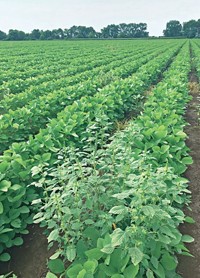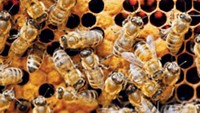Advertisement
Grab your lab coat. Let's get started
Welcome!
Welcome!
Create an account below to get 6 C&EN articles per month, receive newsletters and more - all free.
It seems this is your first time logging in online. Please enter the following information to continue.
As an ACS member you automatically get access to this site. All we need is few more details to create your reading experience.
Not you? Sign in with a different account.
Not you? Sign in with a different account.
ERROR 1
ERROR 1
ERROR 2
ERROR 2
ERROR 2
ERROR 2
ERROR 2
Password and Confirm password must match.
If you have an ACS member number, please enter it here so we can link this account to your membership. (optional)
ERROR 2
ACS values your privacy. By submitting your information, you are gaining access to C&EN and subscribing to our weekly newsletter. We use the information you provide to make your reading experience better, and we will never sell your data to third party members.
Specialty Chemicals
Palmer amaranth, the king of weeds, cripples new herbicides
Scientists in the US sound the alarm about a crop-smothering weed that is growing resistant to multiple herbicides
by Melody M. Bomgardner
August 3, 2019
| A version of this story appeared in
Volume 97, Issue 31

North Dakota State University weed scientist Brian Jenks can tell you exactly when, where, and how Palmer amaranth first appeared in his state.
In 2018, the noxious weed sneaked, via seed, across state lines using a variety of clever tactics, then sprouted in five locations. The crop saboteur was quickly detected by sharp-eyed farmers, who alerted the authorities. “In at least four of the locations, I’m fairly confident that we pulled everything—that nothing went to seed,” Jenks says.
Still, Jenks plans to travel to the locations this year to see if more of the weeds emerge. Agronomists in Iowa, Michigan, Minnesota, Ohio, South Dakota, and Wisconsin have also vowed to contain the movement of Palmer amaranth, a member of the pigweed family. Palmer amaranth, Jenks explains, “is not your average, everyday pigweed. We call it a game changer.”
The game that Palmer amaranth is changing is the old one where farmers spot weeds growing in a field, then spray a common herbicide to kill them. Thanks to the plant’s ability to proliferate traits for herbicide resistance, those moves no longer work. Indeed, the specimens that Jenks pounced on last year arrived already resistant to glyphosate—commonly known as Roundup—and were likely resistant to other chemicals as well.
Palmer amaranth’s ability to quickly develop resistance to herbicides is a major reason that the Weed Science Society of America voted it the country’s most troublesome weed in 2017. But that’s not the only reason. Weed scientists and agriculture chemical company experts describe the many ways that biology and growth habits make this king of weeds uniquely difficult to kill or contain. It will likely require brand-new technology—technology that does not yet exist—to regain the upper hand.

It wasn’t always this way. There was a time when Roundup could kill any Palmer amaranth plant. But populations resistant to glyphosate emerged in the southeastern US in 2006 and soon began to move about the country.
These days, farmers need a plan to control Palmer amaranth that may be resistant to multiple classes of herbicide. Some are reviving the use of two older herbicides, 2,4-D and dicamba, with recently introduced corn and soybean crops that are genetically engineered to tolerate those chemicals.
But weed scientists at Kansas State University say farmers are complaining that those herbicides seem to be losing their effectiveness as well. In March, weed physiology professor Mithila Jugulam confirmed that a population of Palmer amaranth growing in the school’s long-term study fields survived applications of 2,4-D at 18 times the rate called for on the label. Many also brushed off a hearty dose of dicamba.
Jugulam says she will perform additional greenhouse trials to identify all the herbicides that the population of Palmer amaranth and its progeny are resistant to. It’s likely to be a long list. “We have to look at very many chemistries to find what will kill these weeds,” she says.
Larry Steckel, a weed specialist at the University of Tennessee, heard about Jugulam’s results and was not surprised. Farmers in his state, in their third year of using dicamba with glyphosate on crops tolerant to both chemicals, tell him a single pass is no longer controlling Palmer amaranth and other weeds as it did in the first year.
To confirm that the weeds have become resistant to dicamba, Steckel will conduct controlled studies. If resistance is confirmed, he’d like to figure out whether it developed in situ or if resistant weeds migrated to those fields from elsewhere. The herbicide has been used on corn, sorghum, and pastures for 50 years, he says, and resistant weed populations may be spreading their seeds to new places.
When Palmer amaranth survives spraying, it becomes a particular hazard for farmers’ yields. More than other weeds, it easily outcompetes crops for nutrients, water, and even sun, says Dallas E. Peterson, an agronomy professor at Kansas State University. Uncontrolled, the weed can cause crop yields to drop 50% or more.
Palmer amaranth by the numbers, 2018
-
1.8– 2.4 m
Height at maturity
-
1.8– 2.4 m
Width at maturity
-
60 cm
Length of seed head
-
300 m
Distance pollen can travel
-
7.6 cm per day
Top growth rate
-
300,000– 1 million
Seeds per female plant
-
91% decrease in corn, 79% in soybean
Crop-yield impact potential
-
8
Herbicide modes of action with demonstrated resistance
-
5
Maximum number of herbicides to which a single population has been shown to be resistant
Once established, the weed can grow nearly 8 cm a day. Because Roundup is systemic, farmers used to be able to kill taller plants with it, but other herbicides are effective only on plants smaller than about 10 cm. “It can get away from us before we can get out there and make timely postemergence application of herbicide,” Peterson says.
Farmers that spray dicamba on taller, more mature weeds run the chance that they’ll end up with a handful of survivors with genetic traits that help them tolerate the chemical. Those weeds can go to seed, creating a next generation that contains a higher number of resistant plants.
Should farmers succeed in killing all the little Palmer amaranths that first come up, they’re still not out of the woods. Seeds lingering in the soil have the unusual ability to germinate later in the growing season or even in another year. “The key there is you can’t let anything go to seed during that time, which can be quite a challenge,” Peterson says.
A missed weed will grow up to 2.4 m tall. And a mature female plant can produce as many as 1 million tiny seeds.
As Jenks knows well, those seeds can travel far, sometimes with an inadvertent assist from humans. In two of North Dakota’s first five arrivals, the seeds hitched a ride on combines from out of state. The third came in contaminated crop seed; another escaped from crop residue used as animal feed. The fifth case was a head-scratcher—it was found in the middle of a small town along the train tracks, probably from a farmer dumping old seed.
Male Palmer amaranth plants also do their part to ensure the success of the species. They produce copious amounts of pollen, which the wind spreads over hundreds of meters. The pollen can carry herbicide-resistant traits to new populations of Palmer amaranth and, via hybridization, to related pigweeds like water hemp.
Most plants are monoecious, meaning individuals have both female and male parts. But some weeds, like Palmer amaranth, are dioecious, with separate male and female plants. In those species, breeding increases the genetic diversity in a single population. It is an important evolutionary tool that allows them to move quickly into, and dominate, a new landscape.
Genetic diversity lends strength even under taxing conditions. Usually, when weeds develop resistance to herbicides, they pay a price in reduced fitness—for example, they may not compete well with crops or easily survive a period of dry or hot weather. “But with Palmer, most of the resistance we pick up on recently doesn’t appear to come with a fitness penalty,” Peterson says.
Indeed, in a drought, Palmer amaranth may be the last plant standing; its native habitat is the desert of the southwestern US and Mexico. But it has also destroyed cotton fields in the soggy Southeast and can grow to nightmarish sizes in the cold, short-season upper Midwest. Herbicide-resistant Palmer amaranth has also been reported in Argentina, Brazil, and Israel.
Palmer amaranth’s genome confers many advantages, but it may also provide scientists with new insights on how to control it. For example, Jugulam says scientists want to know which genes or mechanisms confer resistance. Weeds can carry mutations in specific molecular sites targeted by herbicides, rendering the chemicals inactive. In other cases, they produce enzymes that metabolize herbicides before they even reach the target site.
“If the plant has a metabolic resistance that works on one compound, the plant may be predisposed to developing that for different chemistries,” Jugulam says. That knowledge could lead to more precise recommendations for herbicides that can’t be metabolized. In addition, knowing whether resistance is carried in dominant or recessive traits can tell scientists how fast it is likely to spread.
Last month, agriculture researchers at the University of Illinois at Urbana-Champaign reported that they identified the region of the plant’s genome that makes it male. If scientists can further identify the maleness gene, they could one day introduce plants that have been modified to carry a permanent trait that forces all seeds fertilized with their pollen to produce only male plants. Eventually a lack of female plants would cause the population to crash (Weed Sci. 2019, DOI: 10.1017/wsc.2019.27).
For now, herbicides are still important weapons in the fight against Palmer amaranth, but farmers need to select them carefully and add other, nonchemical approaches. For example, while farmers once relied on postemergent herbicides, particularly glyphosate, now they are encouraged to use a preemergent herbicide before or during planting.
At BASF’s agriculture division, Technical Marketing Manager Daniel Waldstein recommends using preemergent and postemergent herbicide mixtures with multiple modes of action. For example, the firm’s preemergent Zidua PRO is a combination of pyroxasulfone, a newer herbicide, and two older chemicals.
Farmers should plan to reapply preemergent herbicides during the season, at least until crops are big enough to keep weeds from seeing sunlight, Waldstein says. Otherwise, he says, “you can go from a clean field in June to seeing weeds in July and August.”
And what works this year may not work next year. Palmer amaranth is more than capable of developing resistance to preemergent herbicides. “We’re going to have to constantly adapt, like Palmer amaranth has adapted to our strategies,” says Drake Copeland, technical service manager at FMC, a provider of crop-protection chemicals. “There are a lot of things you can do that don’t pour out of a jug.”
Copeland points to research showing that a winter cover crop can reduce weed seed germination rates by 40–50%. He’d like to see farmers use cover crops along with a wider variety of crop rotations to help preserve the effectiveness of herbicides such as those in FMC’s Authority line.
Waldstein agrees. He looks to how his father farmed in Iowa in the 1940s when the only herbicide on the market was 2,4-D. His dad grew corn for 2 years, then oats the following year, followed by timothy and clover for hay. “He stuck to that rotation because he learned the hard way that, if he didn’t, the weeds would get out of control.”





Join the conversation
Contact the reporter
Submit a Letter to the Editor for publication
Engage with us on Twitter